Pipes & Tubes
- Home
- Pipes & Tubes
Pipes & Tubes

Nickel Tubes
Nickel 200 (UNS N02200): Commercially pure nickel with good mechanical properties and excellent resistance to corrosive environments.
Nickel 201 (UNS N02201): Similar to Nickel 200 but with lower carbon content, making it suitable for applications involving temperatures above 600°F to avoid embrittlement.
Nickel-Copper Alloys (Monel 400, UNS N04400): Known for its high strength and excellent corrosion resistance, particularly in marine and chemical environments.
| Specification | EN Standard | Grade | Chemical Composition | Description |
|---|---|---|---|---|
| Nickel 200 | EN 2.4060 | Nickel 200 | Ni: 99.0 min, Fe: 0.4 max, Cu: - | Pure nickel with excellent resistance to corrosion and good mechanical properties. Suitable for chemical processing and electronics. |
| Nickel 201 | EN 2.4061 | Nickel 201 | Ni: 99.0 min, Fe: 0.2 max, Cu: - | Similar to Nickel 200 but with improved mechanical properties at elevated temperatures. Used in high-temperature applications. |
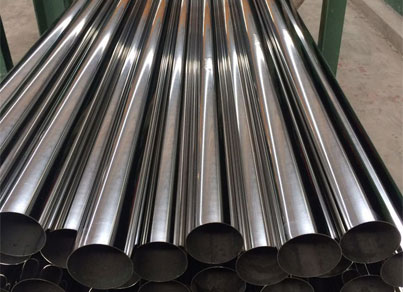
Monel Alloy Pipe
Monel 400 (UNS N04400) :-
Composition: Approximately 63% Nickel, 28-34% Copper, and small amounts of Iron, Manganese, Carbon, and Silicon.
Characteristics: Outstanding corrosion resistance in a wide range of environments, including seawater, hydrofluoric acid, sulfuric acid, and alkalies. Good mechanical properties from sub-zero temperatures up to 1000°F (538°C).
Monel K-500 (UNS N05500)
Composition: Similar to Monel 400 but with the addition of aluminum and titanium.
Characteristics: Enhanced strength and hardness due to age-hardening, while retaining the excellent corrosion resistance of Monel 400.
ASTM B163: Standard specification for seamless nickel and nickel alloy condenser and heat exchanger tubes, including Monel 400.
ASTM B165: Standard specification for Monel 400 seamless pipe and tube.
ASTM B725: Standard specification for welded, unannealed Monel 400 pipe.
ASTM B730: Standard specification for welded, annealed Monel 400 pipe.
ASME SB163, SB165: ASME specifications for Monel 400 pipes and tubes for pressure vessels and high-temperature services.
| Specification | EN Standard | Grade | Chemical Composition | Description |
|---|---|---|---|---|
| Monel 400 | EN 2.4360 | Monel 400 | Ni: 63-70, Cu: 28-34, Fe: 2.5 max, Mn: 2.0 max, Si: 0.5 max, C: 0.3 max | Good resistance to seawater, hydrofluoric acid, and sulfuric acid. Suitable for marine, chemical, and hydrocarbon processing industries. |
| Monel K500 | EN 2.4375 | Monel K500 | Ni: 63-70, Cu: 27-33, Fe: 2.0 max, Mn: 1.5 max, Si: 0.5 max, C: 0.25 max, Al: 2.3-3.15, Ti: 0.35-0.85 | Combines excellent corrosion resistance of Monel 400 with greater strength and hardness. Used in marine, oil and gas, and pump applications. |
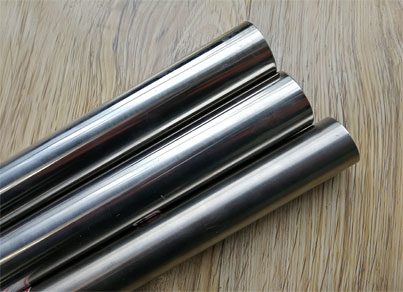
Inconel Pipes & Tubes
Inconel pipes and tubes maintain structural integrity at temperatures ranging from cryogenic to
over 2000°F (1093°C), making them ideal for applications in furnaces, reactors, and exhaust
systems.
Inconel's resistance to corrosion by various acids, alkalis, and salt solutions, even at high
concentrations and temperatures, ensures longevity and reliability in harsh chemical processing
environments.
Inconel forms a protective oxide layer at high temperatures, preventing oxidation and maintaining
structural stability, crucial in applications such as jet engines and gas turbines.
Inconel alloys offer good weldability, facilitating ease of fabrication and assembly in complex engineering projects without compromising structural integrity.
| Specification | EN Standard | Grade | Chemical Composition | Description |
|---|---|---|---|---|
| Inconel 600 | EN 2.4816 | UNS N06600 | Ni: 72%, Cr: 14-17%, Fe: 6-10% | Excellent oxidation and corrosion resistance at higher temperatures. Used in furnace components, chemical, and food processing. |
| Inconel 601 | EN 2.4851 | UNS N06601 | Ni: 58-63%, Cr: 21-25%, Fe: Balance | Superior oxidation resistance and scaling at high temperatures. Used in industrial furnaces, heat treating equipment, and gas turbine components. |
| Inconel 625 | EN 2.4856 | UNS N06625 | Ni: 58%, Cr: 20-23%, Mo: 8-10%, Nb: 3.15-4.15% | Outstanding fatigue and thermal-fatigue strength. Excellent oxidation and corrosion resistance. Used in aerospace, marine, and chemical processing industries. |
| Inconel 718 | EN 2.4668 | UNS N07718 | Ni: 50-55%, Cr: 17-21%, Fe: Balance, Nb: 4.75-5.5%, Mo: 2.8-3.3% | High yield, tensile, and creep-rupture properties. Used in aerospace components, gas turbines, and high-strength fasteners. |
| Inconel 725 | EN 2.4663 | UNS N07725 | Ni: 55-59%, Cr: 19-22.5%, Mo: 7-9.5%, Nb: 2.75-4% | Similar to 625 but with enhanced strength due to age-hardening. Used in oil and gas applications, particularly for downhole equipment. |
| Inconel X-750 | EN 2.4669 | UNS N07750 | Ni: 70%, Cr: 14-17%, Fe: 5-9%, Ti: 2.25-2.75% | Excellent oxidation and corrosion resistance. Used in gas turbines, nuclear reactors, and rocket engines. |
| Inconel 800 | EN 1.4876 | UNS N08800 | Ni: 30-35%, Cr: 19-23%, Fe: 39.5% min | Good strength and excellent resistance to oxidation and carburization at elevated temperatures. Used in heat exchangers, process piping, and nuclear steam generator tubing. |
| Inconel 825 | EN 2.4858 | UNS N08825 | Ni: 38-46%, Cr: 19.5-23.5%, Mo: 2.5-3.5%, Fe: Balance | Exceptional resistance to a wide variety of corrosive environments. Used in chemical processing, oil and gas, and pollution control equipment. |
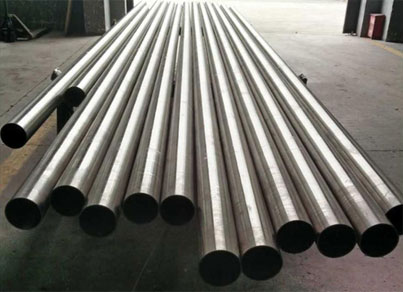
Hastelloy Pipes & Tubes
In the realm of industrial applications where corrosion resistance, durability, and reliability
are paramount, Hastelloy pipes and tubes stand out as a top choice. Engineered with a unique
combination of nickel, molybdenum, chromium, and other alloying elements, Hastelloy offers
exceptional performance in the most demanding environments. Let's delve into the myriad benefits
and applications of Hastelloy pipes and tubes.
One of the most notable features of Hastelloy pipes and tubes is their unparalleled resistance to
corrosion. Whether exposed to harsh chemicals, acidic solutions, or high-temperature environments,
Hastelloy maintains its integrity, making it ideal for industries such as chemical processing,
petrochemical, and pharmaceutical.
| Specification | EN Standard | Grade | Chemical Composition | Description |
|---|---|---|---|---|
| Hastelloy B-2 | EN 2.4617 | UNS N10665 | Ni: Balance, Mo: 26-30%, Fe: 2-6%, Cr: 1% max, Si: 0.1% max, Mn: 1% max, C: 0.02% max | Excellent resistance to hydrochloric acid at all concentrations and temperatures. Used in chemical processing. |
| Hastelloy C-4 | EN 2.4610 | UNS N06455 | Ni: Balance, Mo: 15-17%, Cr: 14.5-16.5%, Fe: 3% max, W: 3-4.5%, Co: 2% max, Mn: 1% max, Si: 0.08% max, C: 0.01% max | Excellent stability in oxidizing and reducing environments. Used in chemical processing and pollution control. |
| Hastelloy C-22 | EN 2.4602 | UNS N06022 | Ni: Balance, Mo: 12.5-14.5%, Cr: 20-22.5%, Fe: 2-6%, W: 2.5-3.5%, Co: 2.5% max, Mn: 0.5% max, Si: 0.08% max, C: 0.015% max | Exceptional resistance to pitting, crevice corrosion, and stress corrosion cracking. Used in chemical processing, pollution control, and waste treatment. |
| Hastelloy C-276 | EN 2.4819 | UNS N10276 | Ni: Balance, Mo: 15-17%, Cr: 14.5-16.5%, Fe: 4-7%, W: 3-4.5%, Co: 2.5% max, Mn: 1% max, Si: 0.08% max, C: 0.01% max | Resistant to a wide range of severe environments. Used in chemical processing, pollution control, and power generation. |
| Hastelloy G-30 | EN 2.4603 | UNS N06030 | Ni: 43%, Mo: 5-6.5%, Cr: 28-31%, Fe: 13-17%, Cu: 1.5-2.5%, W: 1.5-4%, Co: 5% max, Mn: 1.5% max, Si: 1% max, C: 0.03% max, P: 0.04% max, S: 0.03% max | Excellent corrosion resistance to commercial phosphoric acids and many complex environments. Used in fertilizer production and chemical processing. |
| Hastelloy X | EN 2.4665 | UNS N06002 | Ni: 47%, Mo: 8-10%, Cr: 20.5-23%, Fe: 17-20%, Co: 0.5-2.5%, W: 0.2-1%, Mn: 1% max, Si: 1% max, C: 0.05-0.15%, P: 0.03% max, S: 0.03% max | Excellent oxidation resistance and fabricability. Used in gas turbine engines, industrial furnaces, and chemical processing. |

Titanium Pipes & Tubes
In the realm of advanced engineering and aerospace technology, titanium pipes and tubes stand as
exemplars of strength, durability, and versatility. Leveraging the exceptional properties of
titanium, these components offer unparalleled performance in demanding environments. Let's embark
on a journey to explore the remarkable attributes and diverse applications of titanium pipes and
tubes.
Titanium's hallmark feature lies in its extraordinary strength-to-weight ratio, surpassing that of
traditional metals like steel and aluminum. Titanium pipes and tubes provide exceptional structural
integrity while significantly reducing overall weight, making them indispensable in aerospace,
automotive, and marine applications where weight savings are paramount.
| Specification | EN Standard | Grade | Chemical Composition | Description |
|---|---|---|---|---|
| Titanium Grade 1 | EN 3.7025 | UNS R50250 | Ti: 99.5%, O: 0.18% max, Fe: 0.2% max, C: 0.08% max, N: 0.03% max, H: 0.015% max | Unalloyed titanium with excellent corrosion resistance, ductility, and weldability. Used in chemical processing and marine environments. |
| Titanium Grade 2 | EN 3.7035 | UNS R50400 | Ti: 99.2%, O: 0.25% max, Fe: 0.3% max, C: 0.08% max, N: 0.03% max, H: 0.015% max | Unalloyed titanium with good corrosion resistance, strength, and ductility. Used in aerospace, chemical processing, and medical applications. |
| Titanium Grade 5 | EN 3.7165 | UNS R56400 | Ti: 90%, Al: 6%, V: 4%, Fe: 0.25% max, O: 0.2% max, C: 0.08% max, N: 0.05% max, H: 0.015% max | Also known as Ti-6Al-4V, it is the most commonly used titanium alloy with high strength, light weight, and good corrosion resistance. Used in aerospace, marine, and medical implants. |
| Titanium Grade 7 | EN 3.7235 | UNS R52400 | Ti: 99.2%, Pd: 0.12-0.25%, Fe: 0.3% max, O: 0.25% max, C: 0.08% max, N: 0.03% max, H: 0.015% max | Excellent corrosion resistance in reducing and oxidizing environments. Used in chemical processing and pollution control equipment. |
| Titanium Grade 9 | EN 3.7195 | UNS R56320 | Ti: 94%, Al: 3%, V: 2.5%, Fe: 0.25% max, O: 0.15% max, C: 0.08% max, N: 0.03% max, H: 0.015% max | Also known as Ti-3Al-2.5V, it offers a good balance of strength and weldability. Used in aerospace, marine, and sports equipment. |
| Titanium Grade 12 | EN 3.7105 | UNS R53400 | Ti: 98%, Mo: 0.2-0.4%, Ni: 0.6-0.9%, Fe: 0.3% max, O: 0.25% max, C: 0.08% max, N: 0.03% max, H: 0.015% max | Improved corrosion resistance compared to unalloyed grades, especially in high-temperature environments. Used in chemical processing and marine applications. |

Super Duplex Pipes & Tubes
Super duplex stainless steel provides exceptional resistance to corrosion, particularly in
environments containing chlorides, acids, and seawater. This property makes it well-suited for
offshore platforms, desalination plants, and chemical processing facilities.
Super duplex stainless steel offers higher strength compared to conventional austenitic and ferritic
stainless steels, enabling thinner wall constructions and reducing material weight while maintaining
structural integrity. This characteristic is advantageous in applications requiring strength-to-weight
ratio optimization.
| Specification | EN Standard | Grade | Chemical Composition | Description |
|---|---|---|---|---|
| Super Duplex 2507 | EN 1.4410 | UNS S32750 | Ni: 6-8%, Cr: 24-26%, Mo: 3-5%, N: 0.24-0.32%, C: 0.03% max, Mn: 1.2% max, Si: 0.8% max, P: 0.035% max, S: 0.02% max | High strength and excellent resistance to pitting, crevice corrosion, and chloride stress corrosion cracking. Used in chemical processing, oil and gas, and marine environments. |
| Super Duplex 32760 | EN 1.4501 | UNS S32760 | Ni: 6-8%, Cr: 24-26%, Mo: 3-4%, W: 0.5-1%, Cu: 0.5-1%, N: 0.2-0.3%, C: 0.03% max, Mn: 1% max, Si: 0.8% max, P: 0.03% max, S: 0.01% max | Similar to 2507 with added tungsten for improved pitting and crevice corrosion resistance. Used in aggressive environments such as offshore and petrochemical industries. |
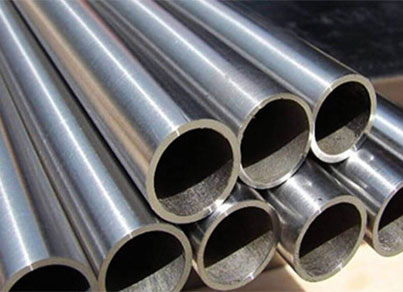
Duplex Pipes & Tubes
Duplex stainless steels are based around an alloying addition of 22% chromium whereas Super Duplex stainless steels are based around an alloying addition of 25% chromium. Both Duplex pipes are made from a form of austenitic-ferritic stainless steel, based upon iron with alloying additions of chromium, nickel and molybdenum. Duplex pipes have great strength, very high corrosion resistant, heat resistant and great weldability. They are used widely in marine, chemical processing, water treatment etc.
| Specification | EN Standard | Grade | Chemical Composition | Description |
|---|---|---|---|---|
| Duplex 2205 | EN 1.4462 | UNS S31803 / S32205 | Ni: 4.5-6.5%, Cr: 21-23%, Mo: 2.5-3.5%, N: 0.08-0.20%, C: 0.03% max, Mn: 2% max, Si: 1% max, P: 0.03% max, S: 0.02% max | Good corrosion resistance and high strength. Used in oil and gas, chemical processing, and marine applications. |
| Duplex 2304 | EN 1.4362 | UNS S32304 | Ni: 3.0-5.5%, Cr: 21.5-24.5%, Mo: 0.05% max, N: 0.05-0.20%, C: 0.03% max, Mn: 2.5% max, Si: 1% max, P: 0.04% max, S: 0.03% max | Lower alloy content than 2205 but with good corrosion resistance and strength. Used in structural and storage tanks, heat exchangers, and chemical processing. |
| Duplex 2507 | EN 1.4410 | UNS S32750 | Ni: 6-8%, Cr: 24-26%, Mo: 3-5%, N: 0.24-0.32%, C: 0.03% max, Mn: 1.2% max, Si: 0.8% max, P: 0.035% max, S: 0.02% max | High strength and excellent resistance to pitting, crevice corrosion, and chloride stress corrosion cracking. Used in chemical processing, oil and gas, and marine environments. |
| Duplex 255 | EN 1.4507 | UNS S32550 | Ni: 4.5-6.5%, Cr: 24-27%, Mo: 2.9-3.9%, N: 0.1-0.25%, C: 0.04% max, Mn: 1.5% max, Si: 0.8% max, P: 0.035% max, S: 0.02% max | Higher corrosion resistance and strength compared to 2205. Used in oil and gas, desalination plants, and chemical processing. |
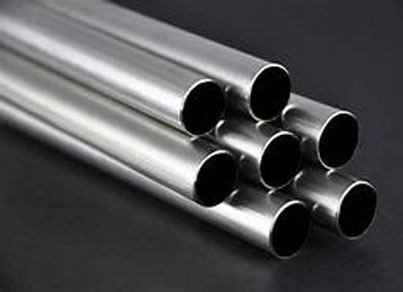
Stainless Steel Pipes
Stainless Steel Seamless Pipes are widely used in where high temperature strength & corrosion are critical in industries fields like refineries, petrochemical, fluid transportation, chemical plants distilleries, fertilizers, food industry etc. With appropriate processes, they have superior performance in high pressure, high strength. In comparison to other types of piping, seamless pipes do not require any welding and are simply formed by solid round billets, which adds on to its strength.
| Stainless Steel Grade | EN Standard | UNS Number | Chemical Composition | Description |
|---|---|---|---|---|
| 304 (ASTM A/ASME SA 312 GR. TP 304) | EN 1.4301 | UNS S30400 | Ni: 8-10.5%, Cr: 18-20%, Fe: Balance, Mn: 2% max, Si: 1% max, P: 0.045% max, S: 0.03% max, C: 0.08% max | Excellent corrosion resistance and formability. Used in food processing, chemical, and architectural applications. |
| 304L (ASTM A/ASME SA 312 GR. TP 304L) | EN 1.4307 | UNS S30403 | Ni: 8-12%, Cr: 18-20%, Fe: Balance, Mn: 2% max, Si: 1% max, P: 0.045% max, S: 0.03% max, C: 0.03% max | Similar to 304 but with lower carbon content for better weldability. Used in chemical processing and storage tanks. |
| 304H (ASTM A/ASME SA 312 GR. TP 304H) | - | UNS S30409 | Ni: 8-11%, Cr: 18-20%, Fe: Balance, Mn: 2% max, Si: 1% max, P: 0.045% max, S: 0.03% max, C: 0.04-0.10% | Higher carbon content for improved high-temperature strength. Used in high-temperature applications. |
| 309S (ASTM A/ASME SA 312 GR. TP 309S) | - | UNS S30908 | Ni: 12-15%, Cr: 22-24%, Fe: Balance, Mn: 2% max, Si: 1% max, P: 0.045% max, S: 0.03% max, C: 0.08% max | Improved oxidation resistance and high-temperature strength. Used in furnace parts, high-temperature containers. |
| 309H (ASTM A/ASME SA 312 GR. TP 309H) | - | UNS S30909 | Ni: 12-15%, Cr: 22-24%, Fe: Balance, Mn: 2% max, Si: 1% max, P: 0.045% max, S: 0.03% max, C: 0.04-0.10% | Similar to 309S but with higher carbon for improved high-temperature strength. |
| 310S (ASTM A/ASME SA 312 GR. TP 310S) | - | UNS S31008 | Ni: 19-22%, Cr: 24-26%, Fe: Balance, Mn: 2% max, Si: 1.5% max, P: 0.045% max, S: 0.03% max, C: 0.08% max | Superior high-temperature resistance and oxidation resistance. Used in furnace parts, heat exchangers. |
| 310H (ASTM A/ASME SA 312 GR. TP 310H) | - | UNS S31009 | Ni: 19-22%, Cr: 24-26%, Fe: Balance, Mn: 2% max, Si: 1.5% max, P: 0.045% max, S: 0.03% max, C: 0.04-0.10% | Similar to 310S but with higher carbon content for improved high-temperature strength. |
| 316 (ASTM A/ASME SA 312 GR. TP 316) | EN 1.4401 | UNS S31600 | Ni: 10-14%, Cr: 16-18%, Mo: 2-3%, Fe: Balance, Mn: 2% max, Si: 1% max, P: 0.045% max, S: 0.03% max, C: 0.08% max | Superior corrosion resistance especially against chlorides. Used in marine, chemical, and medical applications. |
| 316L (ASTM A/ASME SA 312 GR. TP 316L) | EN 1.4404 | UNS S31603 | Ni: 10-14%, Cr: 16-18%, Mo: 2-3%, Fe: Balance, Mn: 2% max, Si: 1% max, P: 0.045% max, S: 0.03% max, C: 0.03% max | Similar to 316 but with lower carbon content for improved weldability. Used in marine, chemical, and medical applications. |
| 316Ti (ASTM A/ASME SA 312 GR. TP 316Ti) | EN 1.4571 | UNS S31635 | Ni: 10-14%, Cr: 16-18%, Mo: 2-3%, Ti: 0.5%, Fe: Balance, Mn: 2% max, Si: 1% max, P: 0.045% max, S: 0.03% max, C: 0.08% max | Titanium stabilized for improved resistance to intergranular corrosion. Used in high-temperature applications. |
| 316H (ASTM A/ASME SA 312 GR. TP 316H) | - | UNS S31609 | Ni: 10-14%, Cr: 16-18%, Mo: 2-3%, Fe: Balance, Mn: 2% max, Si: 1% max, P: 0.045% max, S: 0.03% max, C: 0.04-0.10% | Similar to 316 but with higher carbon content for improved high-temperature strength. |
| 316LN (ASTM A/ASME SA 312 GR. TP 316LN) | EN 1.4429 | UNS S31653 | Ni: 10-14%, Cr: 16-18%, Mo: 2-3%, N: 0.10-0.16%, Fe: Balance, Mn: 2% max, Si: 1% max, P: 0.045% max, S: 0.03% max, C: 0.03% max | Nitrogen-enhanced version of 316L for higher strength. Used in chemical and nuclear applications. |
| 317 (ASTM A/ASME SA 312 GR. TP 317) | - | UNS S31700 | Ni: 11-15%, Cr: 18-20%, Mo: 3-4%, Fe: Balance, Mn: 2% max, Si: 1% max, P: 0.045% max, S: 0.03% max, C: 0.08% max | Higher molybdenum content for improved corrosion resistance. Used in chemical processing and paper mill equipment. |
| 317L (ASTM A/ASME SA 312 GR. TP 317L) | EN 1.4438 | UNS S31703 | Ni: 11-15%, Cr: 18-20%, Mo: 3-4%, Fe: Balance, Mn: 2% max, Si: 1% max, P: 0.045% max, S: 0.03% max, C: 0.03% max | Higher molybdenum content and low carbon for improved corrosion resistance and weldability. Used in chemical processing and paper mill equipment. |
| 321 (ASTM A/ASME SA 312 GR. TP 321) | EN 1.4541 | UNS S32100 | Ni: 9-12%, Cr: 17-19%, Ti: 0.7%, Fe: Balance, Mn: 2% max, Si: 1% max, P: 0.045% max, S: 0.03% max, C: 0.08% max | Stabilized with titanium for improved resistance to intergranular corrosion. Used in high-temperature applications. |
| 321H (ASTM A/ASME SA 312 GR. TP 321H) | EN 1.4878 | UNS S32109 | Ni: 9-12%, Cr: 17-19%, Ti: 0.7%, Fe: Balance, Mn: 2% max, Si: 1% max, P: 0.045% max, S: 0.03% max, C: 0.04-0.10% | Similar to 321 but with higher carbon content for improved high-temperature strength. |
| 347 (ASTM A/ASME SA 312 GR. TP 347) | EN 1.4550 | UNS S34700 | Ni: 9-13%, Cr: 17-20%, Nb: 10xC min, Fe: Balance, Mn: 2% max, Si: 1% max, P: 0.045% max, S: 0.03% max, C: 0.08% max | Stabilized with niobium for improved resistance to intergranular corrosion. Used in high-temperature and welded applications. |
| **347H |
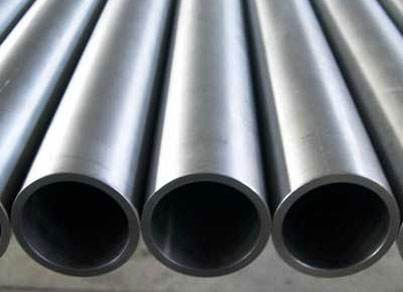
Alloy Steel Pipes & Tubes
In the dynamic landscape of industrial infrastructure, the choice of materials plays a pivotal
role in ensuring reliability, durability, and efficiency. Alloy steel pipes and tubes emerge
as vital components, offering a blend of strength, versatility, and corrosion resistance to meet
the diverse needs of modern industries. Let's explore the myriad benefits and applications of
alloy steel pipes and tubes.
Alloy steel, fortified with elements such as chromium, molybdenum, and nickel, exhibits superior
mechanical properties compared to conventional carbon steel. This enhanced strength enables alloy
steel pipes and tubes to withstand high-pressure environments, making them indispensable in
critical applications such as oil and gas transportation, power generation, and structural
frameworks.
| Specification | EN Standard | Grade | Chemical Composition | Description |
|---|---|---|---|---|
| Alloy Steel 8630 | EN 1.6580 | UNS G86300 | Ni: 0.4-0.7%, Cr: 0.4-0.6%, Mo: 0.15-0.25%, Fe: Balance, Mn: 0.6-0.9%, Si: 0.15-0.35%, P: 0.035% max, S: 0.04% max | High strength and toughness. Used in the oil and gas industry for drilling tools and components. |
| Alloy Steel 9310 | EN 1.6657 | UNS G93106 | Ni: 3.0-3.5%, Cr: 1.0-1.4%, Mo: 0.08-0.15%, Fe: Balance, Mn: 0.4-0.7%, Si: 0.15-0.35%, P: 0.025% max, S: 0.04% max | High hardenability and fatigue strength. Used in aerospace and automotive applications. |
| Alloy Steel 4340 | EN 1.6511 | UNS G43400 | Ni: 1.65-2.0%, Cr: 0.7-0.9%, Mo: 0.2-0.3%, Fe: Balance, Mn: 0.6-0.8%, Si: 0.15-0.35%, P: 0.035% max, S: 0.04% max | High strength, toughness, and wear resistance. Used in heavy-duty machinery, aerospace, and automotive parts. |
| Alloy Steel 4140 | EN 1.7225 | UNS G41400 | Ni: 0.1%, Cr: 0.8-1.1%, Mo: 0.15-0.25%, Fe: Balance, Mn: 0.75-1.0%, Si: 0.2-0.35%, P: 0.035% max, S: 0.04% max | Versatile alloy with good strength and toughness. Used in industrial machinery, automotive, and oil field components. |
| Alloy Steel 8740 | EN 1.6546 | UNS G87400 | Ni: 0.3-0.6%, Cr: 0.4-0.6%, Mo: 0.2-0.3%, Fe: Balance, Mn: 0.5-0.8%, Si: 0.15-0.35%, P: 0.025% max, S: 0.04% max | Good hardenability and toughness. Used in aerospace fasteners, bolts, and other high-strength applications. |

Carbon Steel Pipes
Carbon Steel Seamless Pipes also known as Carbon Steel Pipes are perfect for use in a variety of industries and applications. Carbon steel mainly refers to the steel whose mechanical properties depend on the carbon content in the steel. The pipes and tubes are made from high-quality steel with characteristics of excellent strength & ability to withstand the pressure used in variety of industries like refineries, petrochemical, shipbuilding, infrastructure etc.
| Specification | EN Standard | Grade | Chemical Composition | Description |
|---|---|---|---|---|
| Carbon Steel A106 | EN 1.0308 | UNS K03006 | Ni: 0.40% max, C: 0.30% max, Mn: 0.29-1.06%, P: 0.035% max, S: 0.035% max, Si: 0.10% min | Widely used for high-temperature service. Commonly used in refineries, power plants, and chemical plants. |
| Carbon Steel A53 | EN 1.0408 | UNS G34520 | Ni: 0.40% max, C: 0.25% max, Mn: 0.95% max, P: 0.05% max, S: 0.045% max, Si: 0.30% max | Suitable for welding and forming. Used in steam, water, gas, and air lines. |
| Carbon Steel A333 | EN 1.0345 | UNS K01803 | Ni: 0.40% max, C: 0.10% max, Mn: 0.30-1.06%, P: 0.035% max, S: 0.035% max, Si: 0.10% min | Used in low-temperature services. Suitable for use in liquefied petroleum gas plants. |
| Carbon Steel A671 | EN 1.0425 | UNS K02401 | Ni: 0.40% max, C: 0.20% max, Mn: 0.90% max, P: 0.035% max, S: 0.035% max, Si: 0.10-0.35% | Electric-fusion-welded steel pipe. Used in atmospheric and lower temperature applications. |
| Carbon Steel A672 | EN 1.0508 | UNS K03411 | Ni: 0.40% max, C: 0.22% max, Mn: 0.90% max, P: 0.035% max, S: 0.035% max, Si: 0.10-0.35% | Electric-fusion-welded steel pipe. Used in moderate and high-temperature services. |
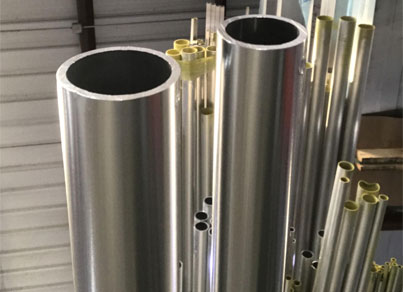
Aluminum Pipes & Tubes
In the realm of structural engineering and industrial applications, aluminum pipes and tubes
stand out as versatile, lightweight, and corrosion-resistant solutions. Leveraging the unique
properties of aluminum, these components offer a myriad of benefits across various sectors.
Let's delve into the unparalleled advantages and diverse applications of aluminum pipes and
tubes.
Aluminum, renowned for its low density and high strength-to-weight ratio, revolutionizes the
concept of structural design. Aluminum pipes and tubes provide exceptional strength while
significantly reducing overall weight, making them ideal for applications where weight savings
are crucial, such as aerospace, automotive, and transportation industries.
| Specification | EN Standard | Grade | Chemical Composition | Description |
|---|---|---|---|---|
| Aluminum 2014 | EN AW-2014 | UNS A92014 | Ni: 0.05% max, Al: Balance, Cu: 3.9-5.0%, Si: 0.5-1.2%, Fe: 0.5% max, Mn: 0.4-1.2%, Mg: 0.2-0.8%, Zn: 0.25% max, Ti: 0.15% max | High strength and excellent machinability. Used in aerospace and military applications. |
| Aluminum 2024 | EN AW-2024 | UNS A92024 | Ni: 0.05% max, Al: Balance, Cu: 3.8-4.9%, Mg: 1.2-1.8%, Mn: 0.3-0.9%, Fe: 0.5% max, Si: 0.5% max, Zn: 0.25% max, Ti: 0.15% max | High strength and fatigue resistance. Used in aerospace structures and military equipment. |
| Aluminum 5083 | EN AW-5083 | UNS A95083 | Ni: 0.05% max, Al: Balance, Mg: 4.0-4.9%, Mn: 0.4-1.0%, Cr: 0.05-0.25%, Fe: 0.4% max, Si: 0.4% max, Zn: 0.25% max, Ti: 0.15% max | Excellent corrosion resistance and high strength. Used in marine and cryogenic applications. |
| Aluminum 6061 | EN AW-6061 | UNS A96061 | Ni: 0.05% max, Al: Balance, Mg: 0.8-1.2%, Si: 0.4-0.8%, Fe: 0.7% max, Cu: 0.15-0.40%, Cr: 0.04-0.35%, Mn: 0.15% max, Zn: 0.25% max, Ti: 0.15% max | Versatile with good mechanical properties and corrosion resistance. Used in construction, automotive, and aerospace. |
| Aluminum 7075 | EN AW-7075 | UNS A97075 | Ni: 0.05% max, Al: Balance, Zn: 5.1-6.1%, Mg: 2.1-2.9%, Cu: 1.2-2.0%, Cr: 0.18-0.28%, Fe: 0.5% max, Si: 0.4% max, Mn: 0.3% max, Ti: 0.2% max | Very high strength and good fatigue resistance. Used in aerospace, military, and high-stress applications. |
| Aluminum 6063 | EN AW-6063 | UNS A96063 | Ni: 0.05% max, Al: Balance, Mg: 0.45-0.9%, Si: 0.2-0.6%, Fe: 0.35% max, Cu: 0.1% max, Cr: 0.1% max, Mn: 0.1% max, Zn: 0.1% max, Ti: 0.1% max | Good mechanical properties and excellent finish quality. Used in architectural, automotive, and furniture applications. |

Nimonic Pipes & Tubes
In extreme temperature environments where conventional materials falter, Nimonic pipes and tubes
emerge as champions of resilience and performance. Engineered with a unique blend of nickel,
chromium, and other alloying elements, Nimonic alloys offer unparalleled strength, corrosion
resistance, and creep properties. Let's delve into the remarkable attributes and diverse
applications of Nimonic pipes and tubes.
Nimonic alloys are specifically formulated to excel in high-temperature applications, where other
materials struggle to maintain integrity. Nimonic pipes and tubes retain their mechanical properties
at temperatures exceeding 1000°C, making them indispensable in aerospace propulsion systems, gas
turbine engines, and industrial furnace components.
| Specification | EN Standard | Grade | Chemical Composition | Description |
|---|---|---|---|---|
| Nimonic 75 | EN 2.4951 | UNS N06075 | Ni: 70-80%, Cr: 18-21%, Fe: 5% max, Ti: 0.2-0.6%, Mn: 1% max, Si: 1% max, C: 0.08-0.15%, S: 0.015% max, Cu: 0.5% max | Good mechanical properties and oxidation resistance at elevated temperatures. Used in gas turbines and industrial furnaces. |
| Nimonic 80A | EN 2.4952 | UNS N07080 | Ni: 65-75%, Cr: 18-21%, Ti: 1.8-2.7%, Al: 1-1.8%, Fe: 3% max, Mn: 1% max, Si: 1% max, C: 0.05-0.13%, S: 0.015% max | High strength and corrosion resistance at elevated temperatures. Used in gas turbine components and high-temperature fasteners. |
| Nimonic 90 | EN 2.4632 | UNS N07090 | Ni: 58-63%, Cr: 18-21%, Co: 15-21%, Ti: 2-3%, Al: 1-1.8%, Fe: 1.5% max, Mn: 1% max, Si: 1% max, C: 0.08-0.2%, S: 0.015% max | High strength and oxidation resistance up to 920°C. Used in gas turbines, aerospace fasteners, and high-temperature springs. |
| Nimonic 105 | EN 2.4634 | UNS N19905 | Ni: 60-70%, Cr: 14-15.7%, Co: 18-22%, Mo: 4.5-5.5%, Ti: 1-1.5%, Al: 0.8-1.5%, Fe: 1% max, Mn: 1% max, Si: 0.5% max, C: 0.12-0.2%, S: 0.015% max | Excellent high-temperature strength and corrosion resistance. Used in gas turbines and high-performance combustion engines. |
| Nimonic 263 | EN 2.4650 | UNS N07263 | Ni: 49-52%, Cr: 19-21%, Co: 19-21%, Mo: 5.6-6.1%, Ti: 1.9-2.4%, Al: 0.3-0.6%, Fe: 0.7% max, Mn: 0.6% max, Si: 0.4% max, C: 0.04-0.08%, B: 0.005-0.02% | Good formability and weldability with high strength at elevated temperatures. Used in aircraft and land-based turbine engines. |
| Nimonic 80 | EN 2.4952 | UNS N07080 | Ni: 65-75%, Cr: 18-21%, Ti: 1.8-2.7%, Al: 1-1.8%, Fe: 3% max, Mn: 1% max, Si: 1% max, C: 0.05-0.13%, S: 0.015% max | High strength and corrosion resistance at elevated temperatures. Used in gas turbine components and high-temperature fasteners. |
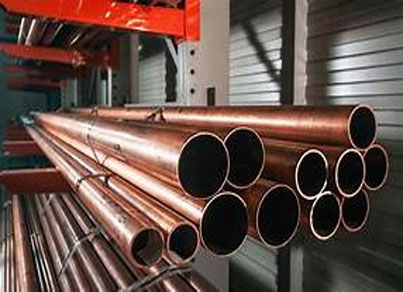
Copper Pipes & Tubes
Copper is an excellent conductor of heat, making it suitable for applications where efficient heat
transfer is essential, such as in heating systems and heat exchangers.
Copper exhibits exceptional resistance to corrosion, making copper pipes and tubes highly durable
and suitable for use in both indoor and outdoor environments. This resistance ensures longevity
and reliability in various applications, including plumbing systems and outdoor installations.
| Specification | EN Standard | Grade | Chemical Composition | Description |
|---|---|---|---|---|
| Copper-Nickel 70/30 | EN 2.0882 | UNS C71500 | Ni: 29-33%, Cu: Balance, Fe: 0.4-1.0%, Mn: 0.5-1.0%, Zn: 1.0% max, Pb: 0.05% max, Si: 0.5% max, C: 0.05% max | Excellent resistance to seawater corrosion and erosion. Used in marine, offshore, and desalination applications. |
| Copper-Nickel 90/10 | EN 2.0872 | UNS C70600 | Ni: 9-11%, Cu: Balance, Fe: 1.0-1.8%, Mn: 1.0% max, Zn: 1.0% max, Pb: 0.05% max, Si: 0.2% max, C: 0.05% max | Good resistance to seawater corrosion with high strength and ductility. Used in marine, heat exchangers, and condensers. |
| Copper-Nickel 66/30/2 | EN CW354H | UNS C71640 | Ni: 29-32%, Cu: Balance, Fe: 0.4-1.0%, Mn: 0.5-1.5%, Zn: 1.0% max, Pb: 0.05% max, Si: 0.2% max, C: 0.05% max | High resistance to seawater corrosion and biofouling. Used in marine, offshore, and power plant applications. |
| Copper-Nickel 70/30 | EN 2.0882 | UNS C71520 | Ni: 29-33%, Cu: Balance, Fe: 0.4-1.0%, Mn: 0.5-1.0%, Zn: 1.0% max, Pb: 0.05% max, Si: 0.5% max, C: 0.05% max | Superior corrosion resistance in seawater and brine environments. Used in shipbuilding, power plants, and desalination plants. |
| Copper-Nickel 80/20 | EN CW353H | UNS C72200 | Ni: 19-21%, Cu: Balance, Fe: 0.1-1.0%, Mn: 1.0% max, Zn: 1.0% max, Pb: 0.05% max, Si: 0.2% max, C: 0.05% max | Excellent mechanical properties and good corrosion resistance. Used in marine engineering, heat exchangers, and chemical processing. |
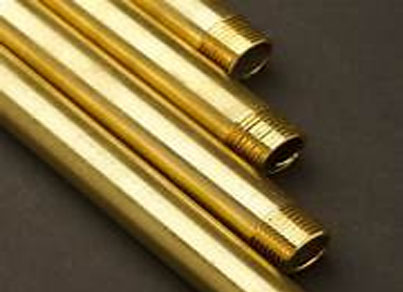
Brass Pipes & Tubes
Brass exhibits superior resistance to corrosion, making it an ideal material for applications where
exposure to moisture or harsh environments is common. This property ensures longevity and reliability
in plumbing systems, marine equipment, and outdoor installations.
Brass is highly machinable, allowing for easy fabrication and shaping into complex geometries with
precise tolerances. This characteristic makes brass pipes and tubes versatile and cost-effective
solutions for various manufacturing processes and custom applications.
| Specification | EN Standard | Grade | Chemical Composition | Description |
|---|---|---|---|---|
| Nickel Silver 752 | EN CW409J | UNS C75200 | Ni: 17-20%, Cu: 63-66%, Zn: 16.5-19.5%, Fe: 0.25% max, Pb: 0.05% max, Mn: 0.5% max, Si: 0.15% max | Good corrosion resistance and high strength. Used in musical instruments, jewelry, and architectural applications. |
| Nickel Silver 753 | EN CW410J | UNS C75300 | Ni: 11-13%, Cu: 61-64%, Zn: 23-27%, Fe: 0.25% max, Pb: 0.05% max, Mn: 0.5% max, Si: 0.15% max | Moderate strength and corrosion resistance. Used in decorative applications, screws, and hardware. |
| Nickel Silver 754 | EN CW411J | UNS C75400 | Ni: 18-21%, Cu: 60-65%, Zn: 18-21%, Fe: 0.25% max, Pb: 0.05% max, Mn: 0.5% max, Si: 0.15% max | High corrosion resistance and good mechanical properties. Used in marine hardware, coins, and industrial applications. |
| Nickel Silver 770 | EN CW408J | UNS C77000 | Ni: 55-65%, Cu: 11-18%, Zn: Balance, Fe: 0.25% max, Pb: 0.05% max, Mn: 0.5% max, Si: 0.15% max | Excellent corrosion resistance and high strength. Used in electrical connectors, springs, and fasteners. |
EN Standards
Define the scope of the standard, specifying the types of pipes and tubes covered,
their
intended applications, and any exclusions.
List other standards referenced within the document for testing methods, materials,
dimensions, and other technical requirements.
Provide definitions of terms used throughout the standard to ensure clarity and
consistency
in interpretation.
| Parameter | Description | EN Standard Number |
|---|---|---|
| Material | Material composition | EN 10216-1, EN 10217-1, etc. |
| Dimensions | Outer Diameter (OD), Wall Thickness (WT) | EN 10220, EN 10217-7, etc. |
| Tolerances | Dimensional tolerances | EN 10297-2, EN 10305-1, etc. |
| Mechanical Properties | Yield Strength, Tensile Strength, Elongation | EN 10216-3, EN 10217-2, etc. |
| Testing | Non-destructive testing methods | EN 10246-7, EN 10294-1, etc. |
| Surface Finish | Surface roughness, Coating | EN 10216-4, EN 10305-3, etc. |
| Pressure Rating | Maximum allowable pressure | EN 10217-5, EN 10312, etc. |
| Application | Suitable applications | Varies based on standard |
| EN Standard | Description | Forms Available | Availability |
|---|---|---|---|
| EN 10216-1 | Non-alloy steel tubes with specified room temperature properties | Seamless | Widely Available |
| EN 10216-2 | Non-alloy and alloy steel tubes with specified elevated temperature properties | Seamless | Widely Available |
| EN 10216-3 | Alloy fine grain steel tubes | Seamless | Widely Available |
| EN 10216-4 | Non-alloy and alloy steel tubes with specified low temperature properties | Seamless | Widely Available |
| EN 10216-5 | Stainless steel tubes | Seamless, Welded | Widely Available |
| EN 10216-7 | Stainless steel tubes for pressure purposes | Seamless, Welded | Widely Available |
| EN 10217-1 | Welded steel tubes for pressure purposes | Welded | Widely Available |
| EN 10217-2 | Electric welded non-alloy and alloy steel tubes with specified elevated temperature properties | Welded | Widely Available |
| EN 10217-3 | Welded steel tubes for pressure purposes - Technical delivery conditions - Part 3: Alloy fine grain steel tubes | Welded | Widely Available |
| EN 10217-4 | Electric welded non-alloy steel tubes with specified low temperature properties | Welded | Widely Available |
| EN 10217-5 | Submerged arc welded non-alloy and alloy steel tubes with specified elevated temperature properties | Welded | Widely Available |
| EN 10217-6 | Submerged arc welded non-alloy steel tubes with specified low temperature properties | Welded | Widely Available |
| EN 10217-7 | Stainless steel welded tubes for pressure purposes | Welded | Widely Available |
ASTM Standards
Specifies the materials allowable for pipes and tubes, including chemical
composition,
manufacturing processes (such as seamless, welded, or electric fusion welded), and
any
additional requirements such as heat treatment.
Lists other ASTM standards or documents referenced within the standard for testing
methods,
materials, dimensions, and other technical requirements.
Details the chemical composition requirements for the materials used in pipes and
tubes,
including maximum and minimum percentages of alloying elements.
| Parameter | Description | ASTM Standard Number |
|---|---|---|
| Material | Material composition | ASTM A53, ASTM A106, ASTM A312, etc. |
| Dimensions | Outer Diameter (OD), Wall Thickness (WT) | ASTM A53, ASTM A106, ASTM A269, etc. |
| Tolerances | Dimensional tolerances | ASTM A530, ASTM A751, ASTM A999, etc. |
| Manufacturing Process | Seamless, Welded, Electric Fusion Welded | ASTM A53, ASTM A795, ASTM A671, etc. |
| Mechanical Properties | Tensile Strength, Yield Strength, Elongation | ASTM A53, ASTM A106, ASTM A333, etc. |
| Testing | Non-destructive testing methods | ASTM E213, ASTM E570, ASTM E2139, etc. |
| Surface Finish | Surface roughness, Coating | ASTM A53, ASTM A269, ASTM A554, etc. |
| Corrosion Resistance | Corrosion testing methods | ASTM A262, ASTM G48, ASTM A1016, etc. |
| Pressure Rating | Maximum allowable pressure | ASTM A53, ASTM A106, ASTM A333, etc. |
| Marking | Product identification, Size, ASTM standard | ASTM A999, ASTM A530, ASTM A530/A530M, etc. |
Pipes Specification
| Pipes Specifications | ASTM A312, A358 / ASME SA312, SA358 |
|---|---|
| Dimensional specification | ANSI/ASME B36.19M, ANSI/ASME B36.10M |
| ASTM A312 SS Seamless Pipe Size | 1 / 2" NB - 16" NB |
| ASTM A312 SS Welded Pipe Size | 1 / 2" NB - 24" NB |
| ASTM A358 SS EFW Pipe Size | 6" NB - 24" NB |
| Outside Diameter | 6.00 mm OD up to 914.4 mm OD, Sizes up to 24” NB available Ex-stock, OD Size Steel Tubes available Ex-stock |
| Pipes Manufacturing Shapes | Hydraulic, Round, Rectangle, Square, Hex, Honed |
| Pipe Manufacturing Techniques | Seamless / Welded / ERW / Fabricated / CDW / 100% X Ray Welded |
| Pipe Schedule Thickness Range | SCH 5, SCH10, SCH 40, SCH 80, SCH 80S, SCH 160, SCH XXS, SCH XS |
| SS Pipes End Types | Plain End, Beveled End, Treaded One End, TBE (Treaded Both Ends) |
| Delivery Condition of SS Pipe | Annealed and Pickled, Polished, Bright Annealed, Cold Drawn |
| Surface Finish | No.1, No.4, No.8 Mirror Finish, 2B |
| Value Added Services | Cutting, Beveling, Polishing, Threading, Destructive, Non Destructive, Ultrasonic Testing |
| Inspection and Test Reports | EN 10204 3.1, Mill Test Certificates, Chemical Reports, PMI Test Reports, Mechanical Reports, Third Party Inspection, NABL Approved Lab, Visual Inspection, Destructive Test and Non Destructive Test Reports |
| Marking | Specification Grade Nominal Pipe Sizes Pipe Schedule or Wall Thickness Manufacturing Method (Seamless / Welded) Heat Number Manufacturer’s Name or Custom Logo - on request Marked Pipe Sample: ANSI B36.19 ASTM A 312 SS 12" NB SCH 40S SEAMLESS HEAT NO. XXXX |
| Outside Finish | 2B, No.4, No.1, No.8 Mirror Finish for Stainless Steel Pipes, Finish as per customer Requirements |
| Delivery Condition | Annealed and Pickled, Polished, Bright Annealed, Cold Drawn |
| Packing of Pipes | Packed in Wooden Boxes, Plastic Bags, Steel Strips Bundled, or as per Customers Requests |
| Specials | Sizes and Specifications other than above can be on request |
Outside Diameter, OD (in mm) & Wall Thickness, WT (in mm) of Pipes
| Product Description | Outside Diamter, OD (in mm) | Wall Thickness, WT (in mm)> |
|---|---|---|
| Round Pipe | 6mm – 630mm | 0.5mm-30mm |
| Square Pipe | 12.7mm* 12.7mm to 300mm* 300mm | 0.5mm-30mm |
| Rectangular Pipe | 10*20mm to 100*200mm | 0.5mm-30mm |
| Colour Coated Pipe | 6mm to 630mm | 0.5mm-30mm |
| Ornamental Pipes | 12.7mm to 76.2mm | 0.5mm-2.0mm |
| Electropolished Pipes | 12.7mm to 250mm | 0.5mm-30mm |
| Slot Round Pipe | 12.7mm to 76.2mm | 0.5mm-2.0mm |
| Triangle Pipe | 16mm to 85mm | 0.5mm-3.0mm |
| Hexagonal Pipes | 13mm to 85mm | 0.5mm-2.0mm |
| Thin-Wall Pipes | 22mm*0.7mm to 108mm*2.0mm | 0.5mm-2.0mm |
| Inner/Outside Polished Stainless Steel Pipes | 12.5mm to 203.2mm | 1.0mm – 5mm |
| Seamless Pipes | 6mm to 430mm | 0.8mm – 30mm |
ASTM A312 / A358 Pipes Forms & Availability
| Products | Size | |
| ASTM A312 SS Square Pipe | ASTM A312 SS Dairy Pipe | Sizes 1/8″NB TO 30″NB IN |
| ASTM A312 SS Exhaust Pipe | ASTM A312 Stainless Steel Flexible Pipe | |
| ASTM A312 Stainless Hollow Pipe | ASTM A312 SS Rectangular Pipe | |
| ASTM A312 SS Round Pipe | ASTM A312 SS Schedule 40 Pipe | |
| ASTM A312 Stainless Sch 10 Pipe | ASTM A312 Stainless Schedule 5 Pipe | |
| ASTM A312 SS Schedule 80 Pipe | ASTM A312 Stainless Threaded Pipe | |
| ASTM A312 Stainless Seamless Pipe | ASTM A358 Stainless EFW Pipes | |
| ASTM A312 SS EP Pipes | ASTM A312 SS Electric Resistance Welded Pipe | |
| ASTM A358 SS Electric Fusion Welded Pipes | ASTM A312 SS Structural Steel Pipe | |
UNS Standards
Outline the testing procedures and inspection methods to ensure compliance with the
specification,
including non-destructive testing (NDT) techniques, visual inspection, and sampling
procedures.
Define the surface finish requirements for pipes and tubes, including surface
roughness and any
coatings or treatments applied for corrosion protection or other purposes.
Specify the marking requirements for pipes and tubes to provide product
identification, size,
material designation, manufacturer's name or trademark, and any additional
information for
traceability.
| Parameter | Description |
|---|---|
| Material Designation | UNS number (e.g., UNS S31803 for Duplex Stainless Steel) |
| Dimensions | Outer Diameter (OD), Wall Thickness (WT) |
| Tolerances | Dimensional tolerances |
| Manufacturing Process | Seamless, Welded, Electric Fusion Welded, etc. |
| Mechanical Properties | Tensile Strength, Yield Strength, Elongation, Hardness, Impact Resistance |
| Testing | Non-destructive testing methods |
| Surface Finish | Surface roughness, Coating |
| Marking and Identification | Product identification, Size, Material designation, Manufacturer's name/trademark |
| Packaging and Delivery | Packaging requirements, Storage, Transportation |
| UNS Number | Description | Forms Available | Availability |
|---|---|---|---|
| S31803 | Duplex Stainless Steel Seamless and Welded Pipes | Seamless, Welded | Widely Available |
| N06625 | Nickel Alloy Seamless and Welded Tubes | Seamless, Welded | Widely Available |
| C71500 | Copper-Nickel Seamless and Welded Tubes | Seamless, Welded | Widely Available |
| K41545 | Low Alloy Steel Seamless and Welded Pipes | Seamless, Welded | Widely Available |